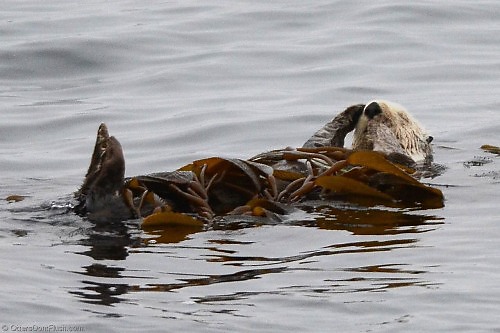Sea Otters
Here are a few things you probably didn't know about sea otters...
 |
| http://www.seattleaquarium.org/exhibit/Marine-Mammals |
1.
The Sea otter is the smallest marine mammal and the largest member of the Weasel family (Mustelidae). They are the only one that live almost entirely in water.
2.
Sea otters have the densest fur of any mammal - with up to 1 million hairs per square inch! Sea otters do not have an insulating layer of blubber, instead they rely on their thick fur to stay warm. They have to spend a big amount of time grooming every day to keep their fur in top condition.
 |
| http://www.pdza.org/northern-sea-otter/ |
3.
Hundreds of thousands of sea otters once lived along most of the coastal North Pacific until they were hunted for their thick, luxurious pelts in the late 1800s. By the year 1900, sea otters were nearly extinct: less than 2,000 remained. The international Fur Seal Treaty of 1911 stopped further exploitation of sea otters, as did the 1972 Marine Mammal Protection Act. Oil spills are also a big threat to sea otters. Their fur loses its buoyance and insulating capacity when covered with oil, leading to hypothermia and pneumonia. Sea otters might also ingest the oil while grooming and cleaning their oiled fur which has detrimental effects on their liver, kidneys and lungs.
4.
Sea otters are one of the few tool-using mammals. A sea otter uses rocks to break open its food on its chest and beating the shells against the rock until the shells break open. Or it can use the opposite approach: holding a shell on its chest and beating it with the rock. They often store their favorite rock in a pocket of fur located under their foreleg.
5.
Sea otters are a keystone species meaning their role in their environment has a greater effect than other species. As predators, sea otters protect the kelp forest by preying on sea urchins that would otherwise overgraze the kelp forests off the coast that provide cover and food for many other marine animals.
 |
| http://seaotters.com/wp-content/uploads/2013/05/640x360-no-otters-no-kelp1.jpg |
6.
Sea otters have a huge appetite. They need to eat about 25-30% of their body weight every day. This would equal to a 150 pound human eating 37 pounds of food everyday. Sea otters primarily eat fish, sea urchins, crabs, and mollusks such as clams, mussels, snails, squid, octopus, and abalone.
 |
| http://www.aquablog.ca/wp-content/uploads/2014/09/2012-01-18-Tanu-eats-a-crab-Meighan-Makarchuk-46.jpg |
7.
Sea otters wrap themselves in kelp so they do not drift away while sleeping. The mothers also wrap their pups in kelp while they go hunting for food so the pups do not get swept away.
 |
| http://www.ottersdontflush.com/uploads/7/1/5/3/7153795/2254133_orig.jpg |
Sources:
http://www.seattleaquarium.org/sea-otters
http://www.pdza.org/northern-sea-otter/
http://www.aquablog.ca/2014/09/7-things-you-didnt-know-about-sea-otters/
Art Project
 |
| Sea Otter art project made by M.U. |
· One big paper plate
· Two small paper plates
· Brown & purple construction paper
· Crayons
· Scissors
· Glue
· Wiggly eyes
· Small black pom
· Black sharpie marker
· Black beading string
Directions:
1. For the head, cut out 1/3 of a small paper plate & glue it onto the other small paper plate to create the nose/mouth piece.
2. Glue the head onto the body (Big paper plate)
3. Color your sea otter with pencils, crayons or markers to give it its natural coloring.
4. Trace out limbs and sea star onto appropriate colored paper.
5. Cut out limbs and sea star and glue onto sea otter body.
6. Trace out the nose/mouth part of the sea otter with a black sharpie marker.
7. Glue a small black pom for the nose & add some whiskers on either side using the bead string.
8. Glue your wiggly eyes. Enjoy!

Comments
Post a Comment